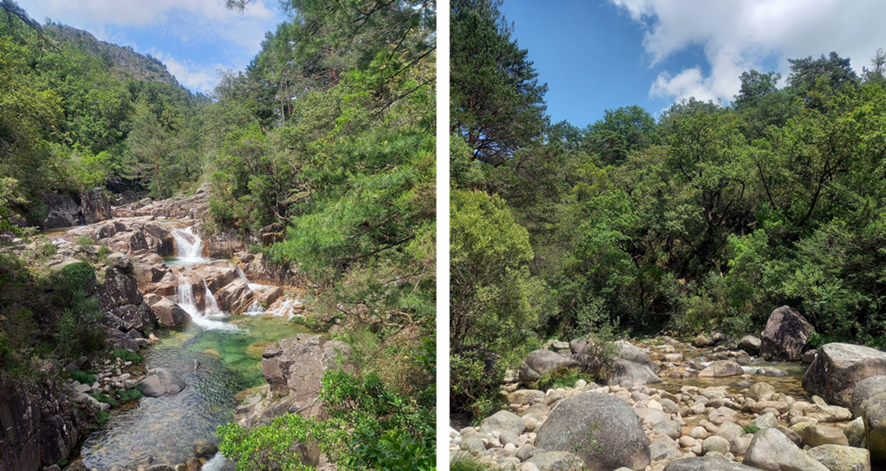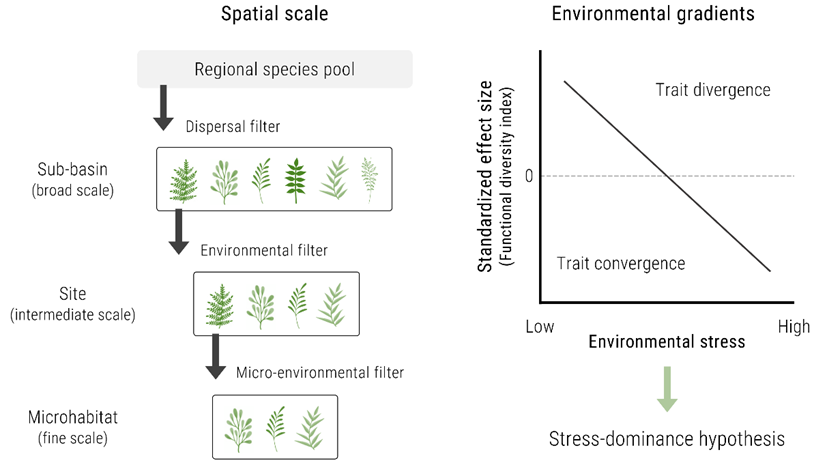2023 HARPER PRIZE SHORTLIST: Throughout March, we are featuring the articles shortlisted for the 2023 Harper Prize. The Harper Prize is an annual award for the best early career research paper published in Journal of Ecology. Juliana Monteiro’s article ‘Bryophyte assembly rules across scales‘ is one of those shortlisted for the award:

👋 About me
I grew up in northern Portugal, in a small coastal city, and ever since I can remember I have been fascinated by nature and science. This prompted me to study Biology and, a few years later, obtain a master’s degree in Ecology (University of Porto, Portugal). After my master’s, I had the opportunity to work with Dr. Cristiana Vieira (Museum of Natural History and Science, University of Porto) in bryophyte ecology and conservation. This experience sparked my interest in studying bryophyte communities from a functional perspective. A few years later I moved to Lisbon, where I am currently doing a PhD under the supervision of Dr. Cristina Branquinho (Centre for Ecology, Evolution and Environmental Changes).
Briefly, my PhD research focuses on understanding the mechanisms underlying the assembly of bryophyte communities. To do so, we studied the functional diversity and composition of aquatic and terrestrial bryophyte communities (i) along environmental gradients, (ii) at different spatial scales, and (iii) along successional gradients. Ultimately, our goal is to identify which traits or trait combinations (e.g., growth-form, spore diameter) optimize fitness and performance in different environments and successional stages. These findings might be useful to guide the selection of bryophyte species for ecological restoration. In parallel, I’m also interested in developing a restoration technique based on the use of biocrust mosses as soil inoculants.
🔎 About the shortlisted article
Understanding how species assemble into communities is a central issue in ecology. So far, most studies have focused on the assembly of woody and herbaceous plant communities, while the mechanisms underlying bryophyte assembly remain poorly understood.
In “Bryophyte assembly rules across scales“, we quantified the relative importance of deterministic and stochastic processes in the assembly of stream bryophyte communities across spatial scales (sub-basin > stream site > microhabitat plot) and environmental gradients (e.g., substrate size and stability, precipitation seasonality, streamflow and turbulence).
We used a null model approach to determine whether observed trait patterns differed from those expected by chance.

Our study revealed that both deterministic and stochastic processes play an important role in the assembly of bryophyte communities, with varying strengths depending on the spatial scale considered.
At the microhabitat plot scale, and contrary to our expectations, coexisting species tended to be more functionally similar than expected, indicating the prevalence of (micro-)environmental filtering. Indeed, even at fine scales, environmental conditions in mountain streams can be highly heterogeneous, leading to spatial aggregation and trait convergence. We found no significant evidence of trait convergence or divergence at the sub-basin scale, consistent with the idea that stochastic processes (e.g., dispersal limitation) determine community assembly at broad spatial scales.
Besides spatial scale, our findings were consistent with the stress-dominance hypothesis: environmental filtering had a stronger effect in stressful environments, while competitive interactions were more important in favourable conditions.

In conclusion, our study highlights the importance of measuring environmental conditions at scales relevant to ecological processes, as abiotic filters may govern community assembly at the same spatial scales where biotic interactions usually take place.
Find Juliana on GoogleScholar.
Read the full list of articles shortlisted for the 2023 Harper Prize here.



